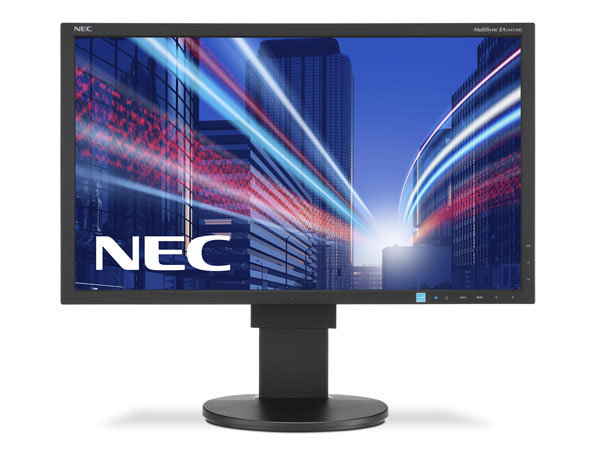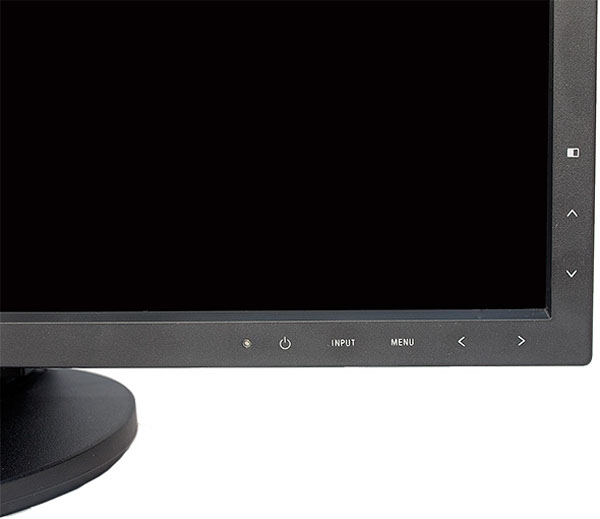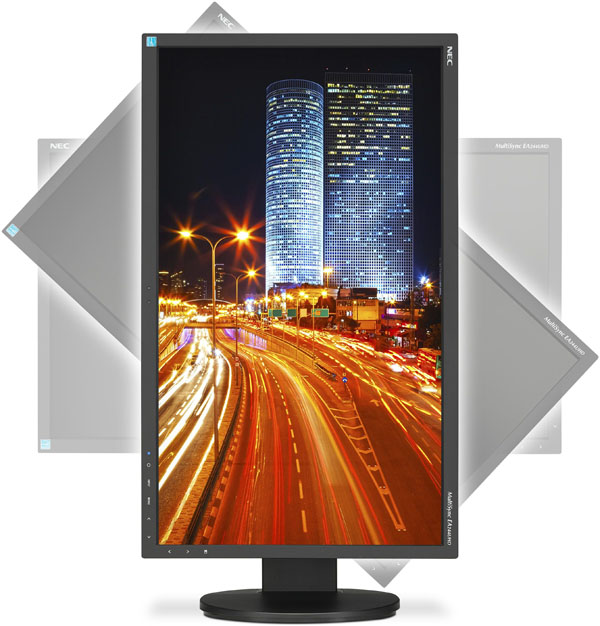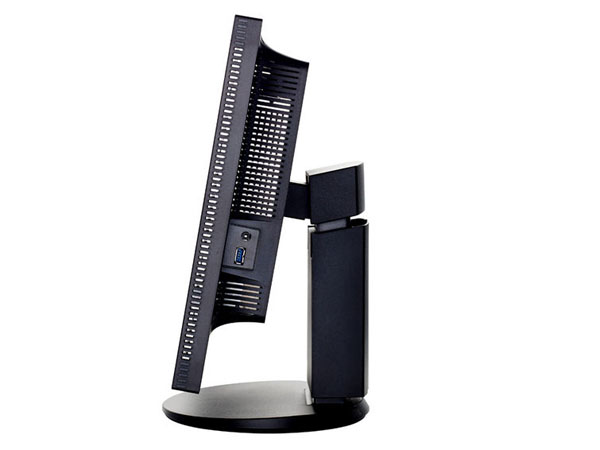NEC EA244UHD 24-Inch Ultra HD Monitor Review
Users seeking maximum pixel density need look no further than a 24-inch Ultra HD screen. We recently looked at Dell’s UP2414Q. Today we’re testing NEC’s EA244UHD. It’s part of the company's business-class line but offers much more than its stablemates.
Why you can trust Tom's Hardware
Packaging, Physical Layout And Accessories
The EA244UHD is securely packed in a double-corrugated carton with air-bladder cushions (something we haven’t seen before). They’re designed to be easily recycled and extremely light. Despite this, they provide solid protection and should ensure the safe arrival of your new purchase.
The accessory bundle includes an IEC power cord; DisplayPort, ControlSync and USB 3.0 cables; and a printed setup guide. There’s no CD in the box; you’ll have to download the user manual from NEC’s website.
Product 360
The base and upright come attached, so no assembly is necessary. Like the other Ultra HD monitors we’ve tested, the EA244UHD has a light anti-glare layer that works well in most environments, while retaining maximum image clarity. The bezel is very thin at the top and sides, and only slightly wider at the bottom, making it a good candidate for multi-screen configurations.
The bezel controls are all touch sensitive and clearly labeled. When you operate them, icons appear on the screen to tell you their functions. Options like volume, brightness and input can be accessed without going through the OSD. The touch pads require very little pressure and can be activated by accident if you’re not careful.
The EA244UHD is fully adjustable thanks to a solidly-built stand. In addition to portrait mode, you get 25 degrees of tilt, 5.1 inches of height travel and almost 360 degrees of swivel. NEC continues to provide one of the best-made stands in the business. It moves with just the right amount of effort and there’s no play at all.
NEC monitors are not the slimmest; their side profile always looks industrial. Generous ventilation exposes the heavily shielded innards in this photo. The small input panel houses a USB port and a headphone jack.
You can see from the back that vents run the full perimeter of the power bulge. Above NEC's logo is a carrying handle, which is extremely useful. There are two 100mm VESA mounts that facilitate plenty of flexibility when using aftermarket brackets. Attached to the upright is a tube for cable management.
Get Tom's Hardware's best news and in-depth reviews, straight to your inbox.
The EA244UHD has almost as many inputs as an HDTV. There are two each of DVI, HDMI and DisplayPort. One of the HDMI ports is MHL-compatible. Why so many? NEC lets you pipe in and display as many as four sources on-screen at once. With such high pixel density, each image can be of extremely high quality. The panel is rounded out by USB 3.0 upstream and downstream ports, ControlSync in and out and an analog audio input.
Current page: Packaging, Physical Layout And Accessories
Prev Page NEC EA244UHD 24-Inch Ultra HD Monitor Review Next Page OSD Setup And Calibration Of The NEC EA244UHD
Christian Eberle is a Contributing Editor for Tom's Hardware US. He's a veteran reviewer of A/V equipment, specializing in monitors. Christian began his obsession with tech when he built his first PC in 1991, a 286 running DOS 3.0 at a blazing 12MHz. In 2006, he undertook training from the Imaging Science Foundation in video calibration and testing and thus started a passion for precise imaging that persists to this day. He is also a professional musician with a degree from the New England Conservatory as a classical bassoonist which he used to good effect as a performer with the West Point Army Band from 1987 to 2013. He enjoys watching movies and listening to high-end audio in his custom-built home theater and can be seen riding trails near his home on a race-ready ICE VTX recumbent trike. Christian enjoys the endless summer in Florida where he lives with his wife and Chihuahua and plays with orchestras around the state.
-
milkod2001 @alidanReply
That's no telly, it's professional desktop monitor, could be 27 or 30'' but would probably cost another 1000 or more extra. -
vincent67 Agree with alidan, at this density, pixels are wasted: you don't see more as you need to scale everything up.Reply
And, knowing the hardware you need to drive this resolution,, I don't see any interest except for some niches.
You need at least 44'' to exploit 4K. -
ribald86 @vincent67Reply
UHD is 2560x1440/2560x1600 - not 4k. Even if it was 4k, I don't see how you can say it is wasted. -
Textfield The problem with these high-DPI screens is that support for these displays is lacking in many modern OS's. Yes, support is getting better, as with Windows 8.1 and its better UI scaling, but even with good support in the OS's UI, you're still at the mercy of the apps you use, and many are terrible when it comes to high DPI, with some even failing to work properly.Reply
Retina is only useful when your programs provide good support for it. Otherwise it's just an annoyance. As an owner of a Yoga 2 Pro (13" 3200x1800), I can speak to this. I normally run my laptop in an upscaled 1920x1080 just to keep compatability.





